One of the cutest succulents you can encounter, the Dolphin Plant also referred to as the String of Dolphin Plant, boasts leaves that look like small pods of dolphins leaping out of the water.
With the scientific name of Senecio Peregrinus, this rare trailing succulent is a product of the Candle Plant (or Hot dog Cactus) and String of Pearls. These dolphin plants grow in trailing vines similar to the other “String of” varieties of bananas, hearts, pearls, and turtles.
Best as a hanging plant that can be grown indoors and outdoors, the dolphin succulents can grow to around three feet in length. They tend to beautifully spill out of your hanging basket or will slowly trickle down over the edge of your pot.
When the String of Dolphins plants receives the care it needs, it becomes a happy and healthy plant. That’s when it starts to produce daisy-like flowers that smell like cinnamon.
Note that this indoor plant is toxic to cats and dogs. Hence, they should be appropriately positioned so that your little buddies don’t have access to them.
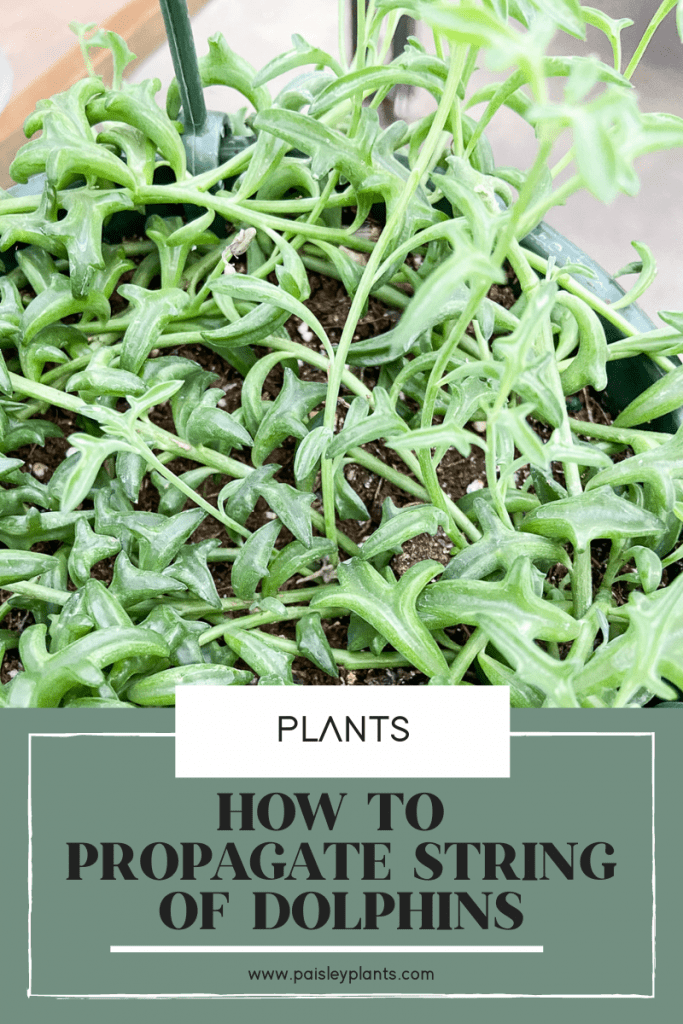
Table of Contents
Propagating the String of Dolphins
The String of Dolphins is one of the easiest succulents to propagate. And usually, gardeners and plant enthusiasts propagate to either salvage a failing or dying plant and allow the plant to multiply.
Here are some key tips on propagating String of Dolphins.
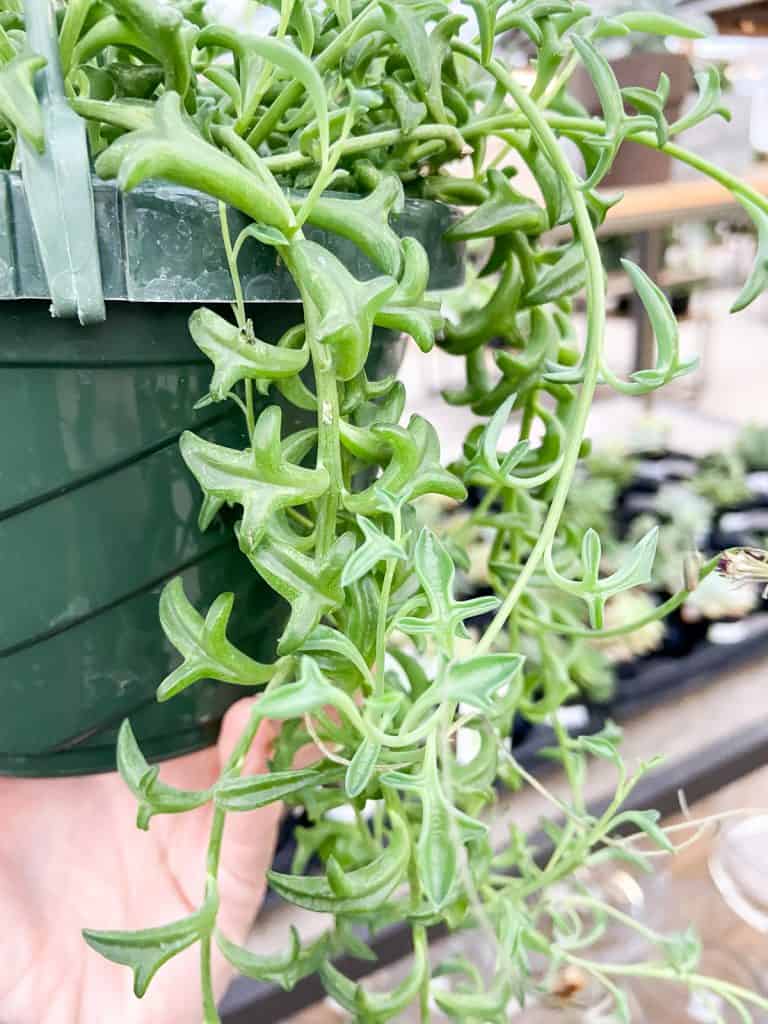
String of Dolphins Water Propagation
Good news! Propagating your string of dolphin succulent isn’t hard. Water propagation is one of the easiest ways to make copies of your String of Dolphins succulents. It doesn’t need any special equipment, and the things you need are standard gardening tools that you already have. Additionally, you have clear visibility of how the roots are developing.
Here are the steps for stem cuttings propagation in water.
- Look for a suitable and healthy stem from your String of Dolphins. Choose a string that is about 3-5 inches long and cut it cleanly using a sharp knife or pair of scissors.
- Remove all low-bearing foliage that you find at the bottom of your cutting. You don’t want any leaves under water.
- Put this strand in a propagation station or glass container full of distilled or filtered water.
- Set the jar in a west-facing window and ensure that the cutting is not receiving any direct sunlight.
- After one week, replace the water in the jar so the oxygen and the nutrients can also be replenished.
- Expect long tendril-like roots to start showing up after several weeks.
- Transfer the root and stem cutting to a pot filled with cactus soil.
String of Dolphins Propagation in Soil
Another option is to use soil instead of water to propagate your String of Dolphins. The primary consideration for this method is to “observe the callus closely.”
The callus or cut end forms on the wound of the cutting. This is also the exact spot where the new roots will develop.
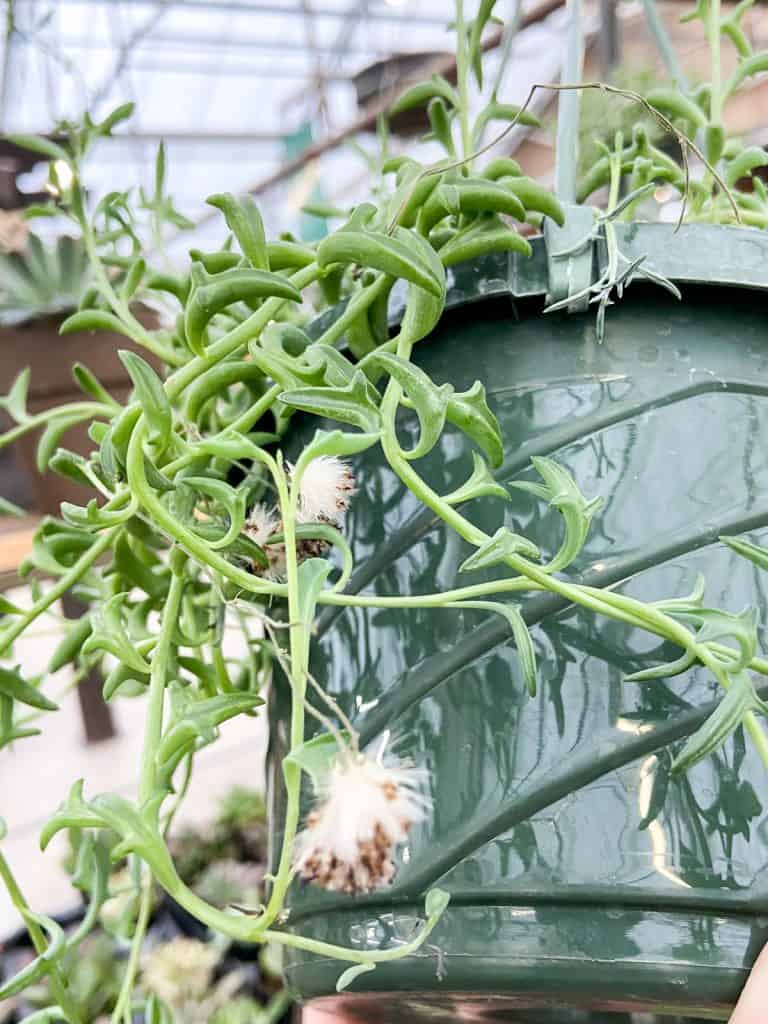
The advantage of using soil when propagating is that it helps support and secure the stem of the cutting while developing and strengthening its roots.
If you want to try this process, here are the steps:
- Cut a three to five inches strand off of the main plant.
- Within two days, the callus ideally should already be formed.
- To promote better and faster growth, you can first dip the end of the stem cutting in a rooting hormone. (Optional)
- Place this stem cutting in a pot with mixed cactus soil.
- Leave the pot in a well-lit space. Note that the spot should not allow the stem cutting to receive direct sunlight.
How Long Does it Take to Propagate a String of Dolphins?
The propagation time of String of Dolphins is slow, and you need to wait up to 2-weeks and sometimes longer before you can see any signs of growth.
The extended period is why most growers resort to using rooting hormones on the cuttings. The hormones give them a ‘bump’ and a better head start. Sometimes, fertilizers are also provided to reinforce their growth.
When to Propagate a String of Dolphins
When you propagate your String of Dolphins plant depends on one thing – why you’re doing it in the first place!
If you’re trying to save a dying plant, you’ll want to propagate it right away. The sooner you propagate it the better chance you have it saving it.
If you just want to make more succulents, the best time is to do it during the growing season (spring time or summer). I’ve personally propagate my plants all year long and it can work during the dormant time but you always have better luck during the growing season.
String of Dolphins General Care After Propagation
The String of Pearls requires more maintenance than the other succulents but the time and effort spent will be worth it. If you are considering getting yourself this new plant or found yourself owning one, here are the general care instructions to ensure that your Dolphins will happily thrive and grow.
Light Requirements
The String of Dolphin prefers a bright spot in your home but can’t tolerate direct sunlight. Be sure to filter the sun with a sheer curtain or put your plant just out of reach of the sun. I have mine in a south-facing window during the winter months and move it to a not so sunny spot for spring and summer.
You will notice the leaves of your plant looking yellow it may be getting too much sun. On the other hand, sparse foliage and leggy growth may mean it needs more light.
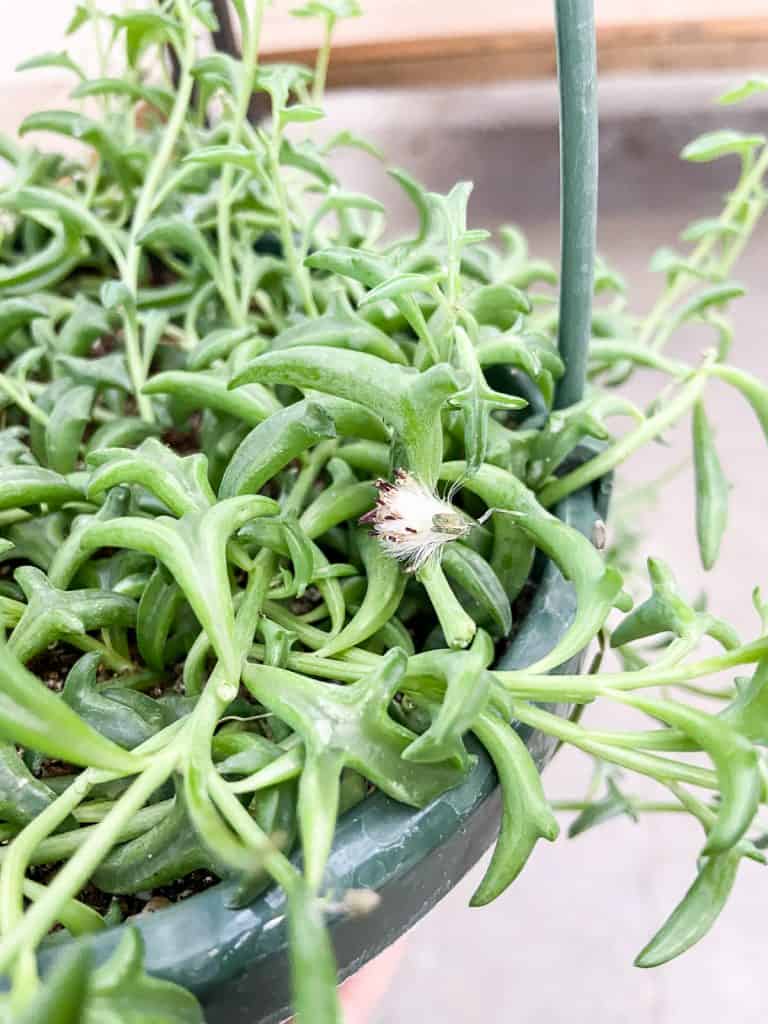
Water Requirements
This plant is drought resistant and can tolerate episodes of drought. Water every week or so during the summer and every other month in the winter but always put your finger in the soil before watering to ensure it needs it!
Use the “Drench and Dry” approach by giving your succulent a long drink and allowing the water be absorbed by the soil. Then allow the excess water to be released from the draining holes.
You can also use the ” Squish Test “! Squeeze the leaves of your plant, if they’re squishy, they need water. If they’re firm they’re good! These plants hold water in their leaves which is how you can tell if they need water by squishing them.
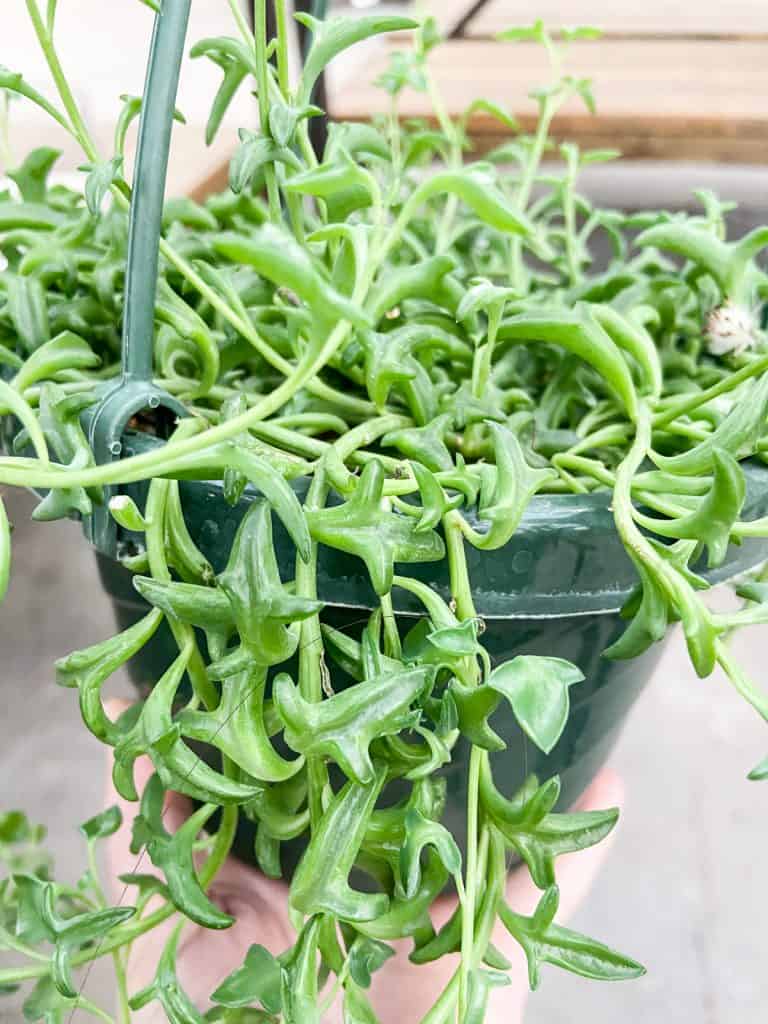
Temperature & Humidity Requirements
Like most succulents, they like warm and dry climates so inside your home is typically just fine! Don’t put it by cold drafts or air conditioning!
If your String of Dolphins is outdoors, a temperature range of 40°F to 70°F (4.5°C – 21°C) in full to partial shade is just what they need.
The plants love dry air, which is great for you! No need to add any more humidity to your home for this plant.
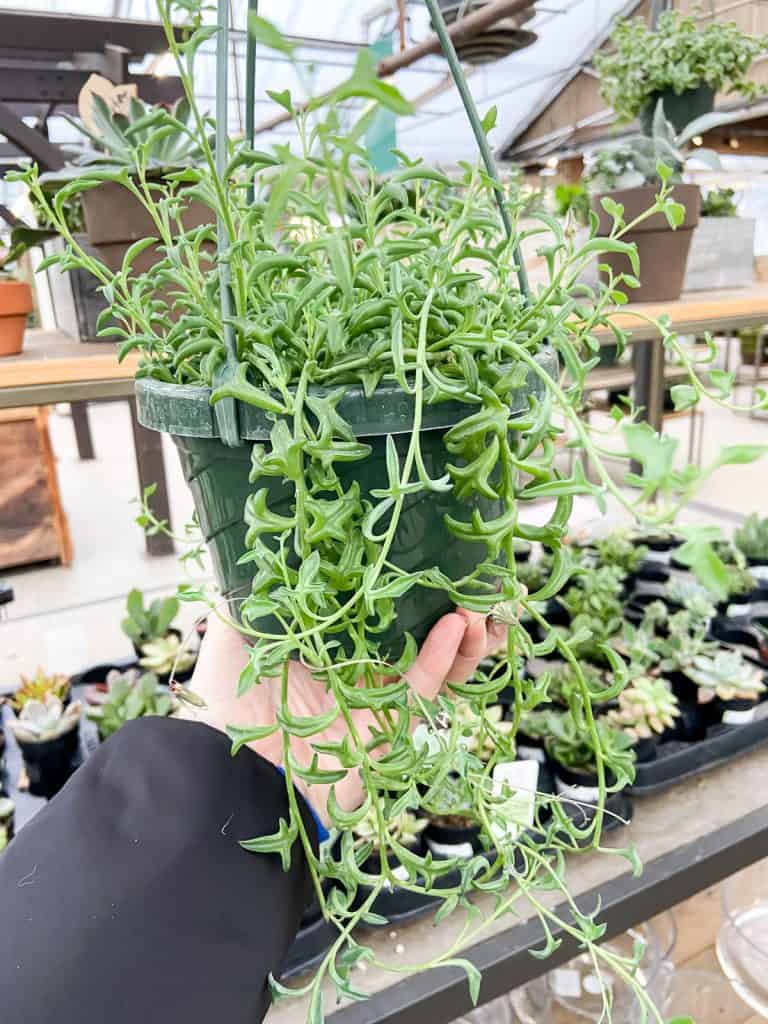
Soil Requirements
Get a well draining soil for your String of Dolphins. Stay away from clay soil or pots without drainage holes so your plant doesn’t get root rot. needs to be a well draining soil. You’ll also want a pot with drainage holes.
If you want to DIY your soil, get potting soil and add perlite into it. The correct ratio is two parts perlite with one part houseplant potting soil.
If the DIY route isn’t for you, you can always purchase ready-made soil cactus mix intended for cactus plants.
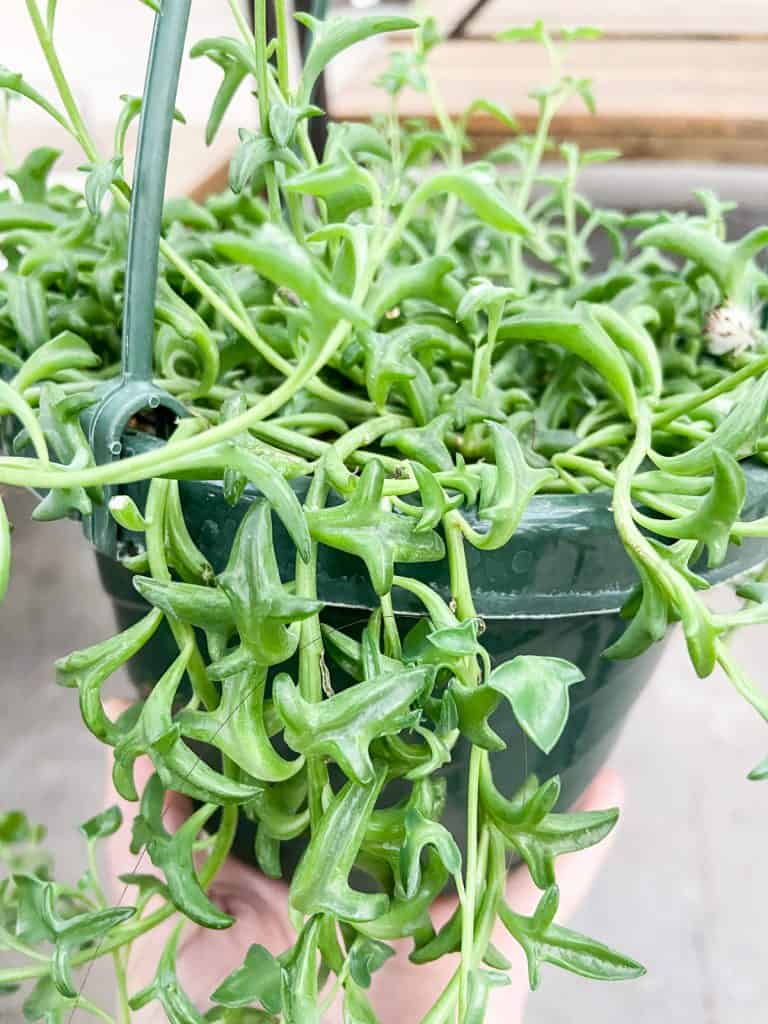
Green Thumb Advice
The String of Dolphins is succulent to behold. It is charming in its way and requires very minimal maintenance. Don’t let your lack of experience and worries stop you from propagating this rare succulent.
Want more string plants fun? Check out my post on propagating for your string of hearts plant here or care tips for your string of fishhooks here!

